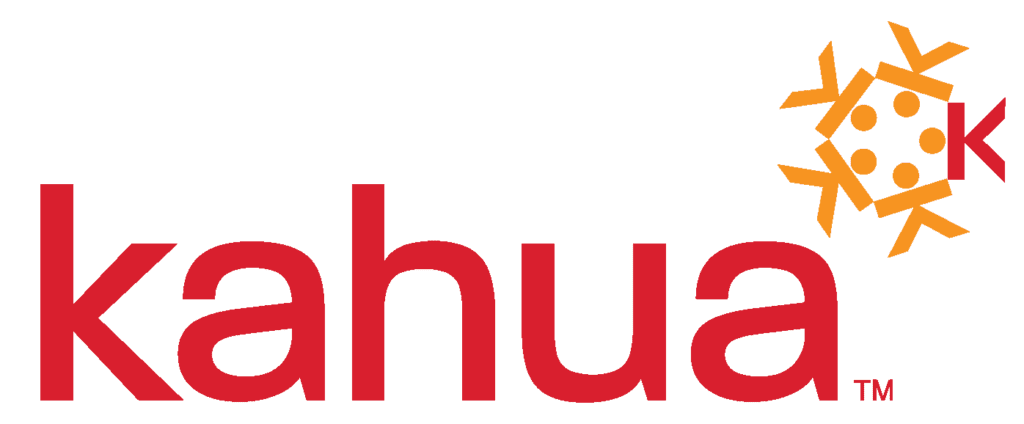Steps Required for Successful Design-Build Project Management
Design-build projects require owners, designers and construction professionals to move in lockstep throughout the entire project cycle. Today’s most successful outcomes arise from ongoing collaboration and communication — often supported by digital tools that streamline workflows, approvals, visualizations and reporting.
Combine that technology with these six steps to help ensure success in any design-build project.
1. Establish Clear Project Goals and Stakeholder Alignment
Every contract should start with shared goals and clearly defined responsibilities. Upholding these consistently will increase the project’s chance of success. To do that, define clear objectives for all parts of the project and invite important stakeholders into the room.
Define the Core Objectives
The owner must collaborate closely with the design and construction teams to identify reasonable outcomes for all parts of the project.
Work backward from these outcomes to determine project scope and define limits and checkpoints to reduce scope creep and keep communication lines open. Determine budget expectations in line with the project scope and objectives.
The project team should outline scope, budget and outcome expectations as early in the design-build process as possible.
Assemble the Right Stakeholders Early
Gather the necessary stakeholders from owner, design and construction teams to attend the early planning sessions. Giving each of these groups the power to supply insight and concerns in kick-off meetings will increase cross-team collaboration.
The stakeholders should feel like equal partners in the process with opportunities to contribute. To that end, refrain from only inviting management to these meetings. Technical input and subject matter expertise are needed as much in these early stages as during the project execution.
Clearly Define Roles and Responsibilities
Clearly documented roles reduce confusion and disputes later in the project. Even when roles seem obvious, written agreements help maintain alignment.
In design-build projects, both contractors and designers report to the owner. Still, identifying a lead — whether contractor or designer — is critical.
Contractors typically emphasize execution and logistics, while designers may prioritize an aesthetic and creative approach. The right lead balances both to ensure the project finishes on time and on budget.
2. Develop a Comprehensive Documentation Strategy
In design-build projects, documentation is more than recordkeeping; it’s the foundation for accountability and coordination. Without a clear system, critical information gets buried in inboxes, outdated folders or handwritten notes. That’s how delays and errors happen.
A centralized documentation strategy ensures that every stakeholder is working from the same source of truth. It helps teams:
-
Track revisions and approvals in real time.
-
Maintain version control across documents and drawings.
-
Ensure compliance with contract terms and regulatory requirements.
-
Simplify handoffs between phases of the project.
Whether it’s a design change, request for information (RFI) response or submittal package, documentation should be easy to locate, easy to update and easy to share. When all project data lives in a single platform, with built-in workflows and audit trails, teams spend less time chasing information and more time moving the project forward.
Drawing Logs, Reviews and Approvals
Even projects that seem simple from the outside can get increasingly complicated during revisions, reviews and approvals.
Set up a process for drawing logs by leveraging software solutions to collect all drafts in a single location with clear identification of the latest approved drafts. The design management tool you choose should make it easy to:
-
Identify stakeholders for review.
-
Send drafts for review and approval.
-
Log questions, comments and approval decisions in a central and visible location.
Release and Distribution Protocol
Once approved, the release and distribution of project documents should be streamlined and timely. Use software here as well to ensure these parts of the distribution process keep all parties on the latest version:
-
Release and return.
-
Slip sheeting and versioning.
-
Distribute list-based notifications.
A design management software with distribution tools should seamlessly move from approvals to distribution, marking outdated versions as such in the process. Instead of emailing the new version to stakeholders, they have access to approved documents in a single location with a clear record of changes and approvals.
3. Integrate BIM and 3D Modeling for Enhanced Transparency
Working from the same version can reduce disagreements and improve communication. But, today’s building information modeling (BIM) and 3D modeling tools further clarify the design-build process by allowing all stakeholders to visualize the desired state, rather than working from 2D drawings or blueprints.
Leverage Technology for Real-Time Visualization
Real-time visualization tools for project planning adopt changes approved by the design-build stakeholders, pushing updated plans to the team.
BIM ensures the build team has the latest approved designs or changes and illustrates those changes to reduce the back-and-forth regarding what changed and why. Digital collaboration reduces time spent in meetings and away from the build site.
Streamline Communication and Changes Within the Model
BIM and 3D modeling with advanced features like model-based permissions and 3D markup don't just allow for digital communication from the site, the office or the home office. It also pulls the conversation out of email, phone call and messaging apps and into the context of the design model.
Model-based permissions ensure only stakeholders with approval privileges can certify design changes, although, anyone on the team can suggest changes due to safety, aesthetic or material requirements.
And BIM with 3D markup capabilities lets team members identify or comment directly on the model. For example, they could flag window height by commenting on the window or specify a new wall color based on supply.
4. Implement Effective Cost Control and Budget Management
Budget planning and cost control for any design-build project requires consistent check-ins to monitor the project’s progression within expected budget.
Due to the changing nature of markets and supplies, the budget management team may also need to make quick decisions that affect the entire project. Detailed tracking, communication and visibility for project stakeholders is vital.
Set Up Transparent Cost Reporting
As a design-build project depends on the continued cooperation of owners, designers and builders on all parts of the project, transparent cost reporting within an accessible cost management tool simplifies the cost reporting process.
When relevant stakeholders can access labor, materials and change orders across departments, the team can engage in early intervention and decision-making.
The financial stakeholder team should use this transparency to discuss potential scenarios like labor shortages or cost increases. Scheduled checkpoints within a centralized cost management system help maintain control, reduce surprises and support better decision-making when market or supply issues arise.
Identify and Mitigate Risks Early
The earlier construction risks are identified, the earlier they can be mitigated. The team stays a step ahead by planning for risky stages in the project and reacting to circumstances before they derail the build.
-
Contract Formation: Use prebuilt templates and collaborative contracts to draft contracts that all parties can agree on.
-
Risk Allocations: Delineate the responsible stakeholders and acceptable actions or margins for known risks.
-
Contingencies: Document when and how deviations from the plan are allowed.
-
Payments: Identify vendors, payment terms and other financial data transparently.
Early agreement upon, and documented acceptance of, the project terms, risks and contingencies provides clarity when disagreements ultimately arise.
5. Enforce Structured Milestones and Change Order Management
Contracts and risk planning mean little without follow-through. Project software that standardizes workflows and milestone tracking helps keep teams accountable.
Establish Clear Project Milestones
Breaking the project into measurable milestones keeps the team motivated and aligned. Break the entire design-build process, from contract to opening, into milestones with performance metrics.
Some examples of clear milestones:
-
Contract stakeholders draft and agree to a contact by June 1.
-
Design chooses paint colors and materials for the atrium by July 15.
-
Build team pours foundation by December 6.
Once the project milestones have been set, pair each with relevant performance metrics to measure success and quickly identify risks to the project timeline. Consider metrics like milestone budget, number of plan revisions or delays, and other metrics that show progress relevant to the milestones.
The Importance of Change Order Management
Change order management can determine the success of a design-build project; it defines how change orders get negotiated, communicated and approved. The iterative nature of design-build requires the design, construction and owner teams to find an agreeable compromise for every stage of the project, including changes.
Without a clear, documented approach, ideally through software, change orders can create confusion or conflict. Change orders should be logged, tracked and approved in a centralized system, so all stakeholders understand what's been agreed upon and why.
6. Measure Performance and Drive Continuous Improvement
Early risk planning is valuable but so is adjusting based on real project data. Monitoring Key performance indicators (KPIs) helps teams identify friction points and adapt in real time.
Track Key Performance Indicators
Key performance indicators should align to the project milestones identified previously. In addition to milestone-specific KPIs, consider tracking metrics that validate design-build process efficiency.
Some of those metrics include:
-
On-time completion rate.
-
Earned value cost variance.
-
Stakeholder satisfaction.
Tracking the right KPIs keeps the project aligned to goals, flags issues before they escalate and creates a measurable path to continuous improvement.
Adopt Iterative Lessons Learned
Use KPI insights to improve processes, such as choosing better vendors or reassigning milestone leads. Gather feedback consistently (and anonymously, if needed) to ensure candid input. Conduct post-milestone reviews to turn lessons into actions.
7. Foster Ongoing Communication and Collaboration
The best teams meet consistently and communicate openly to achieve true collaboration that supports all stakeholders. Regular check-ins and continuous feedback loops enable this support.
Regular Team Check-Ins and Transparency
Weekly or biweekly check-ins create space for design and construction teams to share updates, discuss potential snags and communicate transparently about the progress of the project. Regular meetings ensure communication and collaboration become the default.
When the team can rely on precise change logs, BIM visualizations and process workflows that support feedback and approval processes, they can bring ample evidence to these meetings as to what works and what needs improvement.
Encourage Continuous Feedback Loops
In addition to weekly check-in meetings, integrating digital collaboration tools like in-design markup, change request comments and team chat into the design-build process flow fosters continuous feedback loops that reach team members at all levels of the org chart.
What previously lived in several messaging apps, email, phone calls and the contractor’s notepad become part of the project record — and available for analysis, iteration and improvement.
Implement Successful Design Processes with Kahua
Kahua streamlines the design process across construction projects by managing the cycles of iteration and collaboration that define design-build.
Kahua's design management solution unifies contracts, cost control and communication in a single platform, giving owners full control and visibility. With help from Kahua and the steps outlined here, you can deliver your project on time and on budget.


